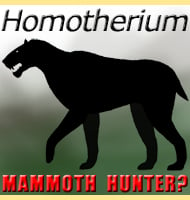Bolodon
In Depth Bolodon is a genus of mammal that lived during the early Cretaceous. Further Reading - Fossil Mammalia of the Mesozoic formations. Palaeontographical Society Monographs 24(110):1-115. - Richard Owen - 1871. - A Catalogue of the Mesozoic Mammalia in the Geological Department of the British Museum 1-215. - G. G. Simpson - 1928. - … Read more
